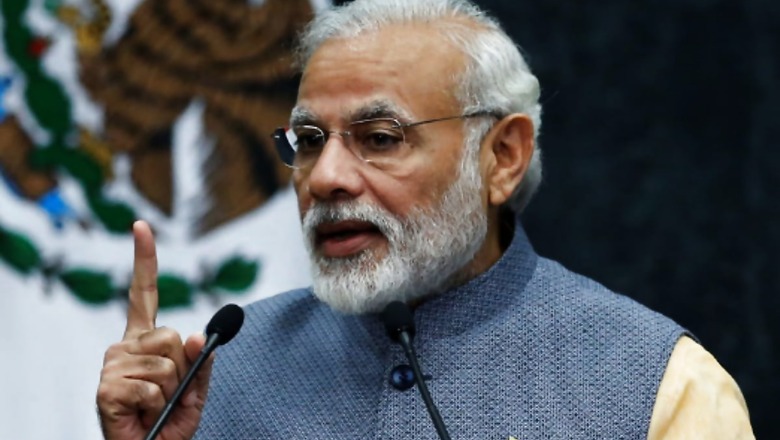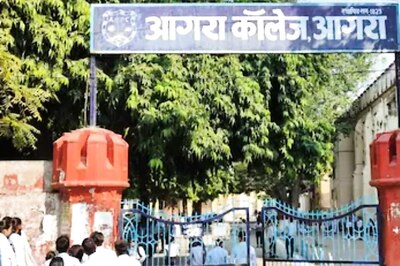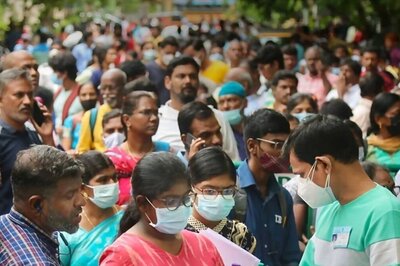
views
At 70, Prime Minister Narendra Modi stands tall in the midst of mayhem. His milestone birthday finds him straddling the wreckage of the economy, while storm clouds gather on the Sino-Indian border, and around him swirls the chaos of a never-ending pandemic. In this picture, where the PM’s detractors see a harbinger of doom, his cult following sees a figure of hope, sublimating fears of the future.
Faced with challenges bigger than any encountered by his predecessors, Modi has been the target of intense criticism, mainly on account of his seemingly directionless economic governance. Coming on the heels of a politically expensive year marked by social unrest and global disapprobation, the impact of lockdown would have levelled a lesser man. Not Modi – he draws strength from hardship.
When life throws him adversity, he finds opportunity: that pretty much sums up Modi’s 70-year odyssey. To quote the man himself: “Each one of us has a natural instinct to rise, like the flame of a lamp.”
Rise he did, from a cramped, low-income household, where he and his brother boosted the family budget with a tea stall. Later, unfazed by the Ramakrishna Mission’s rejection, he found his spiritual home in the Rashtriya Swayamsevak Sangh (RSS). After his political initiation, the fall of the Bharatiya Janata Party (BJP) government in Gujarat in 1996 spurred him on to become chief minister in 2001. The subsequent global barrage of hostility became a catalyst for a prime ministerial run.
Rise he continued to do, turning each jibe against him to his advantage, be it “maut ka saudagar” or “chaiwallah”. In 2019, he leveraged the Congress’s “chowkidar chor hai” slogan to win with a substantially increased majority.
The Opposition, for all its enmity, would give its right arm to understand just how he does it. Rivals see him as a polarising figure, a Hindutva zealot and a showman extraordinaire who plays on prejudices and fears of voters to win. None of this quite explains the Modi phenomenon, which nevertheless has certain definable characteristics.
First, he deals in the currency of hope, far more powerful than the dollar. Second, he believes in acting, not reacting. His agenda is clear and critics be damned. Third, he possesses the holy grail of politics, a personal connection with ‘the people’. Fourth, he comes from nothing and this gives him the confidence to take risks.
He never makes the mistake of infantilising the electorate, which enhances his credibility and capacity for emotional manipulation. The initial phase of lockdown was marked by his reassuring, tell-it-like-it-is presence. When he says there will be pain and we will overcome it together, he is believed. And somehow, a severely shrunken GDP, rampant unemployment and an aggressive enemy no longer seem insurmountable.
Modi looks beyond the Twitterati and an intellectual class absurdly obsessed with Bollywood personalities and their tiffs. Social media is an extremely useful tool, but his connection with the people goes deeper.
The boy who grew up without electricity launches the Saubhagya scheme for electrification of rural households. The boy whose mother cooked over a cow-dung fire delivers cooking gas to women under the Ujjwala scheme. The youth who left home to wander from place to place provides roofs over the heads of the homeless with the PM Awas Yojana.
That boy is now at Lok Kalyan Marg, receiving greetings from leaders all over the world. In the circumstances, the PM has wisely avoided any celebratory overtones, other than the social service – Seva Saptah – which marks his birthday every year. Social media has exploded with adulatory tweets and visuals, a giant laddu and a 70-foot-long cake have been created for the delectation of the media, but he has kept a low profile.
The question uppermost in the minds of political observers on his 70th birthday is naturally his succession plan. Will he, like a good swayamsevak, retire at 75? Does his ‘lockdown look’ – a flowing beard – betoken an impending vanaprastha? Or will the RSS exempt him from the rule, given that he is currently indispensable? Does he have a successor(s) in mind and if so, will he begin the process of grooming anytime soon?
Given his penchant for the unexpected, answers to these questions are necessarily speculative. For the moment, Modi is here and at the height of his powers.
(The author is a senior journalist. Views expressed are personal.)


















Comments
0 comment